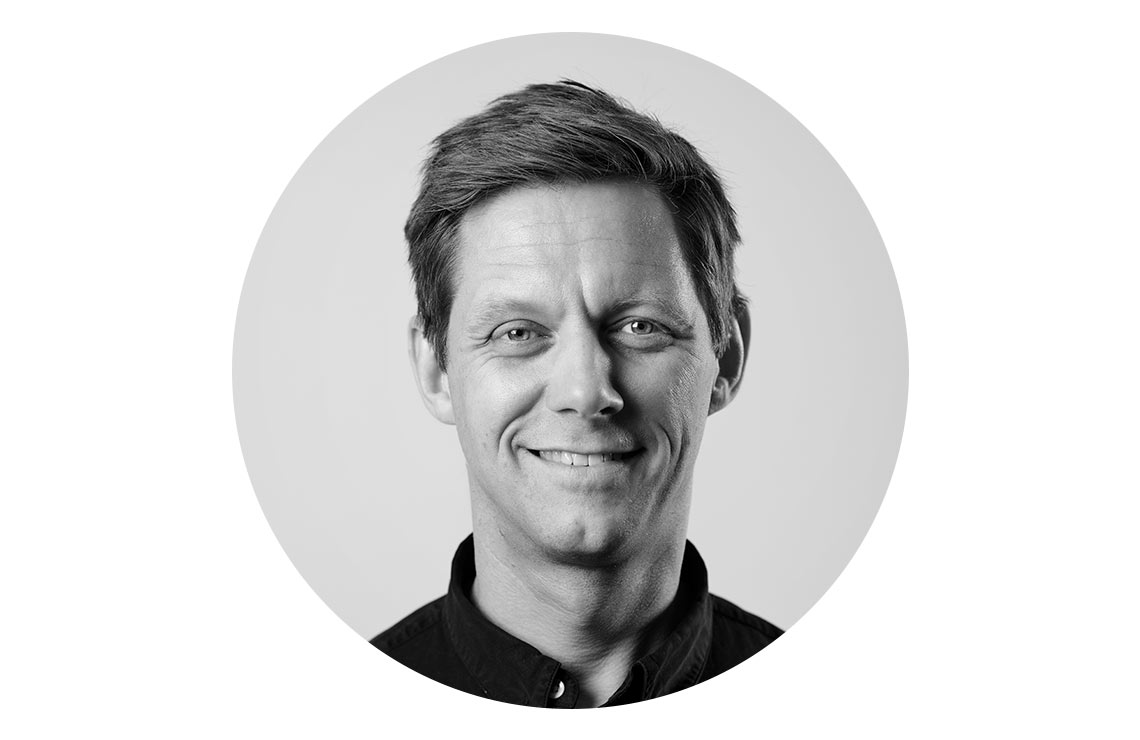Formula 1 got its groove back
Formula 1 got its groove back
In just a few years, F1 has transformed from being a closed world into a global phenomenon. Thanks to the Netflix series Drive to survive, and drivers who have become influencers, a new young audience has discovered the sport.
It all began as a duel of man against man and car against car in 1950. After 67 years, Formula 1 seemed to be on its knees. But now, just a few seasons later, the sport is more popular than ever – and has become an industry that provides entertainment, develops new technology, creates jobs and attracts millions of fans of all ages and from all parts of the world.
The drama was unnoticed
To find out how it happened, we need to turn the clock back to December 2016. Nico Rosberg, son of the former world champion Keke Rosberg from Finland, had just won the world championship title in Abu Dhabi. After an intense battle with his childhood friend and team mate Lewis Hamilton, he managed to win the title in the final race of the season. The entire season was like something out of Star Wars, full of tension, collisions and internal conflicts, but all the drama went unnoticed by the general public.
Only the hardcore fans saw the fireworks display that lit up the night skies as Rosberg crossed the finish line. It was a telling moment; one of the most exciting F1 seasons for many years was over, but the audience were failing and Nico
Rosberg couldn’t really care. He was done.

Nico Rosberg was tired of competing
A few seconds after crossing the finish line, he decided that enough was enough; his ten-year career in the F1 circus was over. Pre-season included, the season, lasted for eleven months. A life of travelling between race tracks on five different continents and in different time zones, combined with fulfilling sponsor commitments and having a factory based in England and a home in Monaco, took its toll both physically and mentally on a sportsman who had to perform his best every time he got into his car.
A Formula 1 driver who is not completely focused not only loses sight of his professional goals; he also risks his life. Nico Rosberg was tired of competing and wanted to spend more time with his family.
“If you ask me, ‘When did you decide to retire?’ That was the moment, two metres after crossing the finish line. There was about USD 100 million going down the drain ? but shit happens,” said Rosberg to Squaremile, the British lifestyle magazine.
Poor viewing figures
At the time, Mercedes had been dominating F1 for two seasons, and several markets, including the United States, were delivering poor viewing figures. There were doubts as to whether the US Grand Prix, scheduled to take place on the relatively new track in Texas, would be financially sustainable, and there was a lot of talk of how F1 had yet again failed to win the US market.
As it turned out, it was not F1 that drew audiences to the US Grand Prix, but singer Taylor Swift, performing her only concert in the country that year, and the fact that the USD 150 concert tickets included admission to the F1 race. This helped increase the number of spectators compared to the previous year, but the question is how many ticket holders actually stayed around to watch the race, which was billed as the main event.
NBC, which had held the F1 rights since 2013, reported that the race in Austin, Texas drew fewer viewers than the figure skating championship broadcast prior to the Grand Prix and the national Nascar truck series. For F1’s part, the US market seemed to be hopelessly lost, but somewhere along the line, things took a turn, one that was as unexpected as it was decisive for the future of F1: the sport managed to conquer not only the United States, but the whole world, and attract a whole new audience.

Ecclestone made an exit
The explanation may sound simple, but it had to do with F1 boss and guru Bernie Ecclestone’s exit from the sport. Ecclestone was born in 1930 and was already involved in the sport in the 1950s. He gained an increasingly tight grip on Formula 1 as the sport grew in popularity in the 1970s.
While stars like Niki Lauda, Ronnie Peterson, James Hunt and Emerson Fittipaldi risked their lives competing, Ecclestone gained control of the TV rights and, together with Max Mosley, later president of the Fédération Internationale de l’Automobile (FIA), laid the foundations for the modern Formula 1.
They created a world championship that raked in huge sums of money, became high-profile public figures, and expanded into new markets, particularly in Asia.
The sport became closed
Simultaneously, Formula 1 was becoming increasingly closed, media access was increasingly restricted, the drivers were hidden behind their helmets and Ecclestone got involved in a string of dubious business deals at the same time as he controlled the championship with an iron hand. During the 2000s he made headlines by praising dictators and Adolf Hitler and talking about his friendship with Russian president Vladimir Putin.
As the times changed, the problems began to pile up, he was indicted for bribery and faced growing criticism. In 2016, the same year that Rosberg won the championship for Mercedes, Ecclestone sold Formula One Group to the US company Liberty Media. By that time he was 86 and had controlled the commercial rights to F1 for 40 years. Even though he still held a formal role in F1 for a further season, he had lost his power base.

A new era
Liberty Media, a media company owned by millionaire John Malone and whose portfolio includes baseball team Atlanta Braves, has a strong interest in the US market. An organisation was quickly set up with people like Chase Carey, who had experience from Fox Corporation, ESPN’s Sean Bratches, and the former team boss Ross Brawn, who won F1 world championship titles with three different teams. As social media became an increasingly important marketing platform, the new owners looked for new ways to increase awareness of the sport and let the public see more than just helmet-clad drivers and cars swishing past.
They looked for a totally new way of bringing fans behind the doors which Ecclestone had fought hard to keep closed. After a conversation between marketing boss Sean Bratches and Paul Martin, a film maker who had made several sports documentaries, an idea for a whole new concept was born.
Brings the fans into the garage
“There was an idea about whether it would be possible to do a behind the scenes with just one F1 team across the season. Sean really liked the idea, but just felt like he wanted to do something that was bigger, that focused on as many of the teams as possible, that was going to show Formula 1 in a completely different light and introduce it to a completely different fan,” says Martin, executive producer of Drive to survive, for Formula1.com.
A year after Liberty Media took over the rights to Formula 1, the work began on creating the hugely successful Drive to survive, a reality-based series that is broadcast on Netflix and that takes fans into the garage and lets them hear the drivers’ stories and follow them both on and off the track. The series provides viewers with a close-up view of conflicts, contractual squabbles, tragic accidents and emotional wins, a series that not only brings fans into the pits but also behind the drivers’ visors, and gives a picture of all the different personalities that work in Formula 1.
All teams signed up
The series was first broadcast in 2018, but without the big teams like Ferrari and Mercedes. When the first season proved to be such a hit, however, all the teams signed up, and interest in the sport has snowballed ever since. At the same time as F1 managed to complete almost a full 2020 season despite the Covid-19 pandemic and introduced a new concept of sprint races in 2021 and a whole new set of rules in 2022, interest in the sport has only grown.
Aftonbladet, which in the autumn of 2020 decided to reduce its F1 coverage, changed its mind, and in the course of 2022 has built a brand new platform with live reporting from all practice and qualifying sessions and Grand Prix races, expanded its F1 blog and launched an F1 podcast. The same trend applied worldwide. In The Netherlands, interest in Formula 1 grew by more than 80% in 2021, thanks largely to driver Max Verstappen, who broke Mercedes’ Drivers’ Championship record of seven straight wins. Interest in the United States has grown by 58%, and in 2021 Formula 1 was the fastest-growing sport on social media platforms.
In the same year, the number of followers on Facebook, Twitter, Instagram, YouTube, TikTok, Snapchat, Twitch and Chinese platforms grew by 40% to 49.1 million, and three weekend races drew more than 300,000 spectators.
Weekend races drew 365,000 spectators in the UK (Silverstone) and 371,000 in Mexico, and a record-breaking number in the United States, where only four years previously it had depended on the Taylor Swift concert to help draw a crowd. More than 400,000 spectators attended the event in Texas, many of them for the first time. Compared with 2019, the number of spectators increased by more than 130,000 for the weekend race in the US alone.
Option to influence
This led to two Formula 1 races being staged in the US in 2022: one in Miami, which was attended by a host of celebrities and drew an average of 2.6 million TV viewers – the biggest ever TV audience the sport has attracted in the US – and the other in Austin, Texas. A new event will be added to the US programme in 2023 in the form of an urban race to be held on The Strip in Las Vegas, and interest is growing among other American racing teams to join America’s only F1 racing team, Haas F1, in what is known as the royal class of motor sport.
For Formula 1 this means a shift in its target market from the traditional European market towards the financially stronger US market. For the drivers it means that, as audiences grow, so will their possibilities to influence people on issues that interest them.
In recent years, seven-time Formula 1 world champion Lewis Hamilton has spoken out on human rights, four-time world champion Sebastian Vettel has spoken regularly on climate issues and the right for everyone to have the same right to love, and Lando Norris, a favourite among young fans, has talked publicly about mental health issues.
Moreover, the sport has shifted away from its fossil-fuel dependency towards setting a comprehensive sustainability strategy. By 2030, Formula 1 aims to be net-zero carbon, and from 2026 it will increase the proportion of engines powered by electricity and 100% sustainable fuel. The fuel used by F1 cars already contains 10% ethanol, and only 0.7% of the carbon footprint generated by the sport comes from the combustion engines used by the ten teams in the course of a season. On top of that, the cars contribute to developing an entire motor industry.
Advances and innovative
Formula 1 is one of the world’s most technologically advanced and innovative sports, optimising performance and developing advanced efficiency improvements that drive innovation forward, from racetracks to passenger car manufacturing. Together with engine partner Honda, manufacturers like Ferrari, Renault, McLaren, Mercedes and Red Bull apply their know-how on the track while thousands of passenger car drivers benefit from their developments in their everyday life.
“AI and ML are big categories that are emerging and that are going to play a key role in the future,” says Red Bull team boss Christian Horner to motorsport.com.
“Data and the way that we operate, it’s our lifeblood. We just generate so much of it. And it impacts everything we do: the way we run a race, the way we develop a car, the way we even analyse drivers and driver selection.”
AI is an important tool
For a single F1 team with several hundred members working both on and off the track and in the factory, AI helps with everything from designing a car to deciding in which direction the car should be developed during a season, choosing the pre-race setup and planning the race strategy. This is even more important when F1 is now operating under a budget cap to limit the spending gap between the teams and boost excitement on the track.
“Making the best decision you can to develop your car cost efficiently, so cost-effective performance is absolutely crucial for us as we move forward with the lack of testing, says Horner.”
Twenty-three races are planned for the 2023 season, representing a new record. Several teams are lining up to take part, and Netflix has signed a contract for two new seasons of Drive to survive. Nico Rosberg’s comment about flushing close to a billion down the drain when he crossed the finish in Abu Dhabi in 2016 was likely an understatement; that’s how far the sport has come in the space of only five years.
This is Formula 1 Racing
Formula 1 is a world championship for single-seater formula cars built according to rules set by the Fédération Internationale de l’Automobile (FIA). Teams must construct their own cars in order to participate. The races are driven on asphalt tracks on five continents in the course of one season. The world championship first took place in 1950 and has been staged annually ever since. Nowadays, 10 teams and 20 drivers compete in a race weekend which usually consists of three practice sessions, one qualifying session that determines the starting order for the race, and one Grand Prix race. Two titles are awarded during a world championship: one to the best driver and one to the best constructor. The 2021 championship was won by the Dutch driver Max Verstappen for Red Bull, but British driver Lewis Hamilton and German driver Michael Schumacher have won the most titles, with seven each, for two different teams.
Anna Andersson
F1 reporter, Aftonbladet
Years in Schibsted: 26
A formula for growth in Schibsted Sports Platform
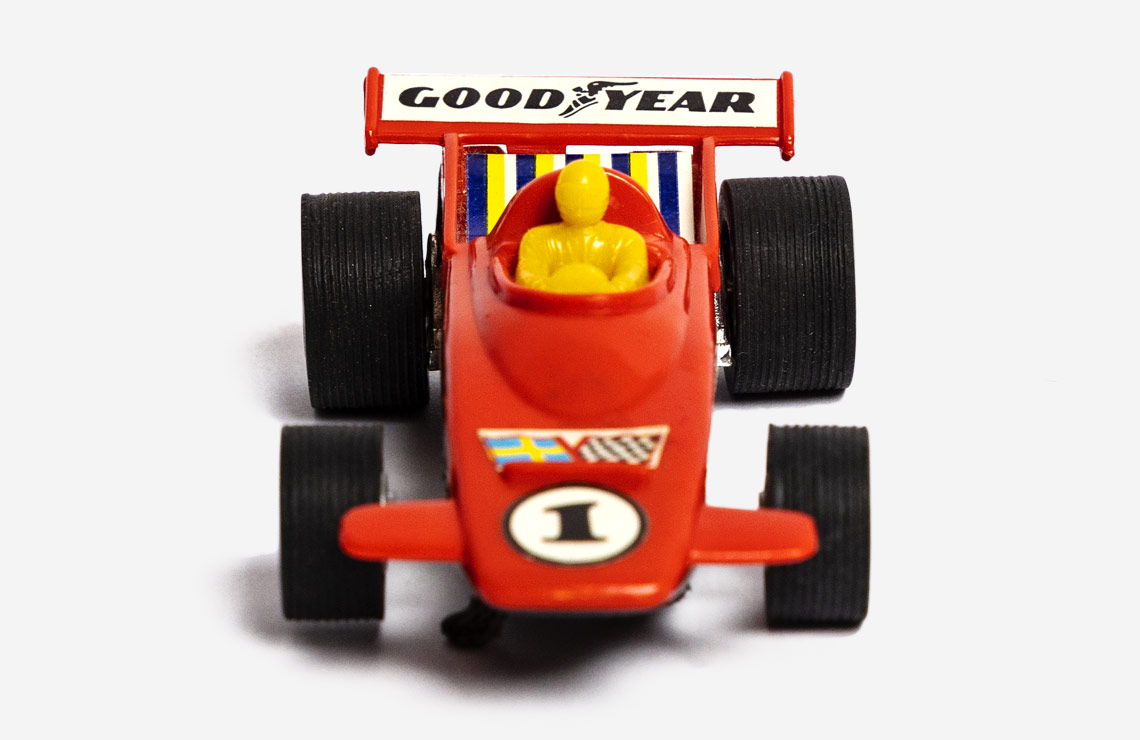
A formula for growth in Schibsted Sports Platform
In March 2022, Schibsted’s sports platform added a new sport for the first time in many years – Formula 1. Behind the decision was a true product strategy to engage younger users, create long-term growth and do something unique.
In Schibsted Sports Platform, we build three products: VG live, Aftonbladet Målservice, and the Sports APIs. VG live and Målservice together serve around 1.5 million unique weekly users across Norway and Sweden with live sports results, videos and statistics. With over 35 million weekly page views, these services generate more than NOK 45 million for VG and Aftonbladet each year.
Our Sports APIs serve as a one-stop-shop for sports data in Schibsted.
But for years, our main offering has stayed the same: football, handball and ice hockey. To expand our audience and do something truly new, we wanted to extend that offering. The result was our new Formula 1 service, launched in March 2022.
Our F1 service enables both new and seasoned fans of the sport access to:
- Live predictions of who will win the races and world championship.
- Live position of the cars on a race map (usually 30 seconds before you see it on TV).
- Video clips of overtakes, pitstops and other key incidents from the race.
- Journalistic coverage on what’s going on, both on and off the racetrack.
When we launched our service, F1 was the world’s fastest growing sport (199% fanbase growth from 2020 to 2021).
However, the project started out with three fundamental questions:
- How can we engage younger users?
- Where can we invest our efforts to show long-term growth potential within our markets?
- What can we do that others have not yet perfected?
These questions led us into a very open product discovery process, including multiple sports. But in the end, F1 stood out as a golden opportunity for us. Here’s why:
F1 engages younger users
According to research by the motorsport network, 63% of F1 fans are 34 years or younger. Much thanks to the Netflix show Drive to Survive, F1’s fanbase is close to that of e-sports in terms of demographics.
We see long-term growth potential in our markets
The main hype around F1 has not been driven by a Swedish or Norwegian rising star. Hypes based on an individual do not necessarily guarantee the popularity of that sport beyond the success of the national star. F1 has become popular as a sport, although there are key individuals boosting that popularity as well. The F1 articles in VG and Aftonbladet also showed a growing volume of unique readers per article.
Despite the sudden hype, F1 is an old sport, with a significant and loyal fan base in our markets, especially in Sweden, a country that has fostered a total of ten F1 drivers throughout history. The combination of it being a proven sport, with a clear format, with a fresh new hype connected to it, gave us faith that it was worth the investment.
Great potential to do something that others have not perfected
If you want to make a new live football service in 2022, you are in for a tough fight. E-sport is efficiently captured by Twitch and YouTube, golf has the PGA Tour app. Tennis is available in multiple services. Because of the limited interest in F1 until recently, there are few live sports services that cover it. Looking through our Schibsted lens, this was a wide-open blue ocean in front of us.
The end-product and results
So far, F1 is generating 600,000 monthly user sessions, and we have established ourselves as a go-to destination for the sport. After 15 Grand Prixes in 2022, we’ve reached about 150,000 unique users and 400,000 page views on average, per Grand Prix. Although we are very happy with these numbers, and they exceeded our targets by about 15%, we still believe that the real potential of F1 lies ahead of us. There are users who are still discovering that we have launched a new sport, even though there are no Norwegian or Swedish drivers participating (yet!).
Read more
Formula 1 got its groove back
Tord Overå
Product Manager, Schibsted Sports Platform
Years in Schibsted: 1.5
Meet our people: “People hold companies accountable”

“People hold companies accountable”
Schibsted’s sales organisation in Sweden conducts surveys to help their customers understand their target groups better. The latest is about people’s view on sustainability – and it’s their most downloaded report so far.
One interesting finding in the survey is that 87% of the respondents point to companies as most responsible for solving the climate issue.
“This shows that people actually do hold companies accountable, not only the politicians,” says Ricki Rebecka Petrini, Head of Marketing and Communication.
At the same time, people understand that many companies find the climate important and want to make a difference – but they also say that they don’t find the companies to be credible when
communicating about these issues.
For Ricki Rebecka, it’s important that her team keeps doing this type of research to serve as a platform for communication and insights.
“I think it’s very important that we get to know the target groups that we so eagerly talk about. Really talk to them instead of only looking at what they are clicking on.”
The next step is to look into the trade-offs people are willing to make to help prevent climate change.
“There is often social pressure to say that you are willing to act, but our coming study asks ‘at what cost’ How many people are actually willing to lower indoor temperatures or pay more taxes These are the fundamental questions that many brands and societal institutions are trying to answer in order to understand what drives their target group,” Rebecka explains.
Ricki Rebecka Petrini
Head of Marketing and Communication, Schibsted Marketing Service
Years in Schibsted: 1
Marcus Tøstie
One subscription unlocks eight Schibsted brands
For the first time, readers in Norway can get full access to content from several of Schibsted’s media brands – with just one subscription.
Marcus Tøstie is the project leader for Full Access, and he’s been working on it since March 2021.
“There is an overall trend that people want access to more and more content. At Schibsted, we have so many strong media brands that complement each other well. Based on this, our idea has been to offer these brands as one super bundle, for a good deal,” he explains.
And it’s a broad offer. People who already have a Schibsted media brand subscription can get access to all digital content from Aftenposten, VG, Bergens Tidende, Stavanger Aftenblad, PodMe,
Magasin +, Dine Penger and E24, for an extra cost that varies depending on their current subscription.
Marcus and his team has found that Full Access can increase both revenue per user and loyalty.
One of the challenges has been to unify different brands to work on one common Schibsted product.
“We have been able to gather the brands and work towards this common goal. And they have learnt a lot from each other’s business models,” says Marcus.
Marcus Tøstie, Business Developer, Schibsted Common Products
Years in Schibsted: 8
Louise Wiinholt
Users need to get ads that are relevant to them
Louise Lai Wiinholt has gone from being an account manager selling advertisements to a product manager developing advertising products at Schibsted in Denmark. She now supports sales and recommerce.
With revenue decline in advertising, Louise and her team are running several discovery processes to understand the sweet spot between users, advertisers and the company’s overall goal.
“We need to better understand how to make ads more relevant for the users, while not losing revenue,” Louise explains.
To do so, they are exploring questions like “which ads are perceived as most intrusive by the users” and “are there any placements they can remove”. The aim is to find ways of making ads more relevant, integrate them better within content, and look into different formats. They also plan on using machine learning for monetisation and are working to increase programmatic sales.
“It’s an important project both to us and the advertisers – we will all learn from this. It’s so essential to get fundamentals like this in place. It will basically enable us to serve ads in a much more efficient, relevant and smarter way,” she explains.
Louise Wiinholt, Product Management Balance Squad, Schibsted Marketplaces Denmark
Years in Schibsted: 11
A bold change to meet our users needs

A bold change to meet our users needs
Schibsted Nordic Marketplaces is starting a journey to meet the need for more specialised services. At the heart of the change is the ambition to be a force for positive change – for both society and the planet. Christian Printzell Halvorsen is leading this journey, knowing that the greatest risk is not daring to change.
I joined Schibsted in 2007, mostly because of the people. I loved the engagement and energy you get when you bring together journalists, engineers, product and salespeople.
I was also inspired by the bold decisions that Schibsted’s management dared to take. After all, our history is one of bold moves, often in difficult times. Just think about it: We set up FINN in 2000 to compete against our own newspapers. We bought Blocket a few years later and rolled it out across the globe, to 36 countries, knowing most would fail, but betting that some, like Le Bon Coin in France, would become incredible successes. Sometimes, you must dare to fail in order to succeed.
Today, we know that this fearlessness paid off. In 2019, we spun off our international marketplaces, creating the company Adevinta – which in 2020, bought eBay Classifieds, concluding the transformation from a newspaper company to the world’s largest online classifieds operator.
Now we’re taking a similarly bold step for our Nordic marketplaces, setting up for the next decade while daring to challenge our success formula for the last 20+ years. We are setting the verticals free and using the combined strength of our Nordic organisations in a whole new way – all to provide our users with the best possible service in each category.
Users are demanding more
Things were relatively easy for us in the “classifieds days”, when marketplaces were all about ads and an ad was an ad regardless of what you were selling.
Now users and customers are demanding more and more sophisticated solutions. This gives rise to the specialists, the companies that create beautiful user experiences by investing deeply into solving a very specific problem and then scale the solution across countries.
Marketplaces are also changing and moving towards so-called “next-generation models” which solve more of the users’ needs, like payments, shipping, insurance and financing. As we move in this direction, Schibsted’s marketplaces must also become specialists. The way you sell a t-shirt is very different from the way you sell a house, and obviously this requires very different solutions. But the way you sell a t-shirt is not that different country-to-country.
We must set our verticals free
In essence, our different categories or what we call verticals, i.e., Mobility, Real Estate, Jobs and Recommerce, are becoming more important dimensions. So, we asked ourselves: If we worked together across the Nordics, what could we achieve within each vertical that any one country alone couldn’t? What if we dedicated four times the resources to each initiative instead of duplicating our effort four times across countries?
The conclusion is clear. We must set our verticals free and let each of them evolve more freely on their own terms to reach their full potential. By taking a Nordic perspective, we can think bigger and be bolder in how we solve users’ and customers’ problems.
We also want to be a force for positive change in society and for our planet. We call it our burning ambition. It defines our purpose and what we want to achieve in the long-term. It is our joint mission for all our marketplaces, built on Schibsted’s common strategic platform: Schibsted Future State.
We will make the sustainable alternative the obvious choice.
Because every action we take today impacts whether our children and grandchildren will have the opportunity to live in a sustainable world.
By doing so, we will increase our positive impact on society and the planet by more than ten times before 2035. We mean “sustainable” in the broader sense of the word. We will obviously contribute to the green transition by driving towards circular consumption, but we also strive to create equal opportunities and a more diverse society.
Empowering smart choices
Imagine a world where it’s so easy to make the right choice that you don’t even think about it. A world where it’s second nature for users and customers to make sustainable choices. We truly believe that we can make a difference by empowering people to make smart choices for themselves and future generations.
By offering people services that help them improve their lives and create financial opportunities, while being good for society, so that they will be able to take future-proof actions.
Because every action we take today impacts whether our children and grandchildren will have the opportunity to live in a sustainable world.
Having been in this business for a long time, I sometimes joke and say I have dedicated my life to ads for t-shirts and used cars, but we are so much more than that. As a salesperson working in one of our marketplaces, you may think you’re simply selling advertising solutions. As an engineer, you may think your job is to write code. And if you work in customer service, you may think your purpose is to solve problems. But whatever your role in Schibsted Nordic Marketplaces is, you are part of our shared mission to make the sustainable alternative the obvious choice.
We need to operate differently
Knowing what we can achieve is one thing. Actually doing it is something else. We have realised that we have to operate very differently to achieve this new, great ambition. To set our verticals free to evolve more independently, we must think differently around both technology and organisation.
For the last 20+ years, our success formula has been local brands with local organisations and local technology platforms, where the solutions for the different verticals have been highly intertwined.
To let each vertical develop independently, we would have to break the dependencies between them. A person working in real estate shouldn’t have to rely on or coordinate with someone in mobility. And that means the technology solutions for each vertical must be separate.
A cross-Nordic view
At the same time, if how you sell a t-shirt is similar across countries, we should be able to use that same technology solution across countries. And similarly for mobility, real estate and jobs. That, however, requires us to have a cross-Nordic view within each vertical to decide which common solutions and business models to deploy.
Finally, while we want as much vertical independence as possible, we share certain assets across verticals, like the valuable and loved FINN, Blocket, Tori, Oikotie, DBA and Bilbasen brands. We also need to create strong areas of expertise to attract, develop and retain talent in sales, tech and marketing, for example.
In conclusion, we have decided to move to a matrix organisation with cross-Nordic verticals as the driving force, supported by functions. Similarly, we are moving towards a technology platform where we separate the solutions for each vertical, but where we use the same solution across countries.
Being aware of and learning from our history has made one thing extremely clear. Our people are our most important competitive advantage.
This is a fundamental change from how we have successfully operated for more than 20 years. It’s a massive change project with inherent risks both technically and with regards to people and market positions. A natural question to ask is: “are the risks too high?” We have taken the opposite view. Staying the same while the world around us is changing is perhaps even riskier.
Most importantly, a successful transformation will set us up for the next decade, enabling us to deliver better solutions to consumers and professional customers – and to society.
Our people the most important advantage
Being aware of and learning from our history has made one thing extremely clear. Our people are our most important competitive advantage – well over 1,000 people across the Nordics with exceptional knowledge about marketplaces and deep insight into our markets. To succeed we must create an even more attractive future for them, one where they can succeed and have more
impact than today. If we are able to engage our people in finding the best solutions, the other risks will be manageable. That’s why we have put people at the front and centre of the transformation.
We have just started this journey, so the outcome is not guaranteed. But we do think our approach is reinforcing everything that we are proud of today – our people and cultures, our brands, our financial results, and more than ever, our impact on society.
Read more
A historic disruption in mobility
Read more
A separate hub will dare to challenge
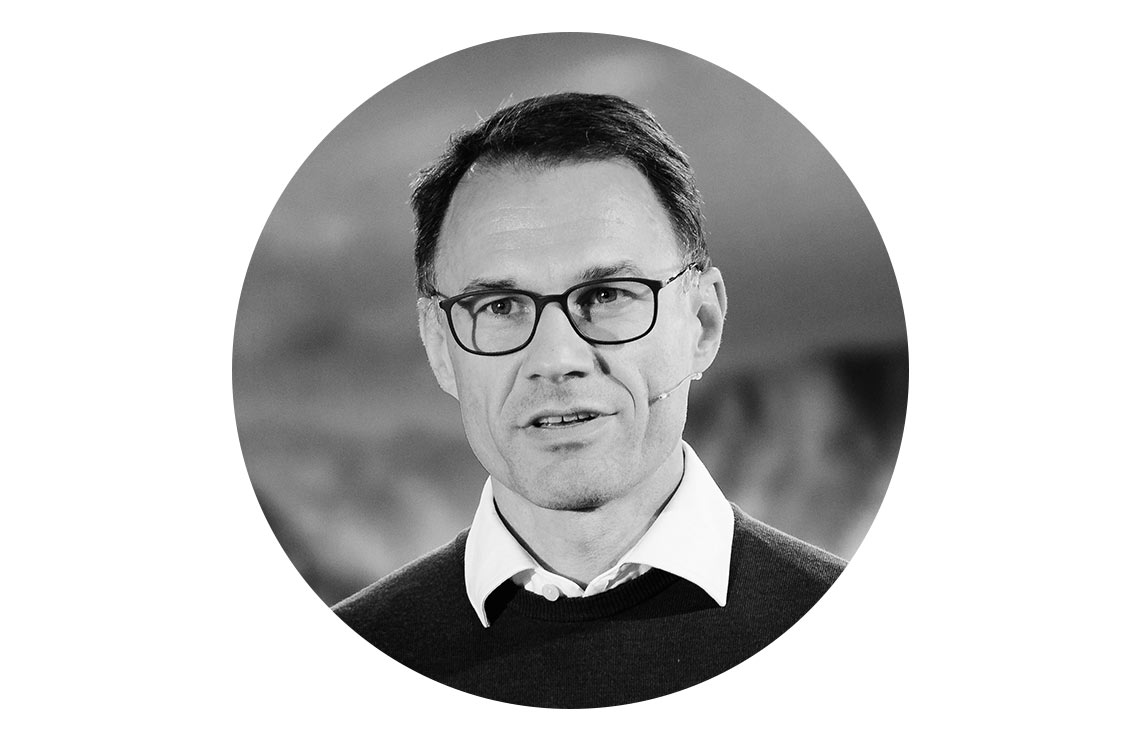
Christian Printzell Halvorsen
EVP Nordic Marketplaces, Distribution and eCommerce
Years in Schibsted: 15
A historic disruption in mobility
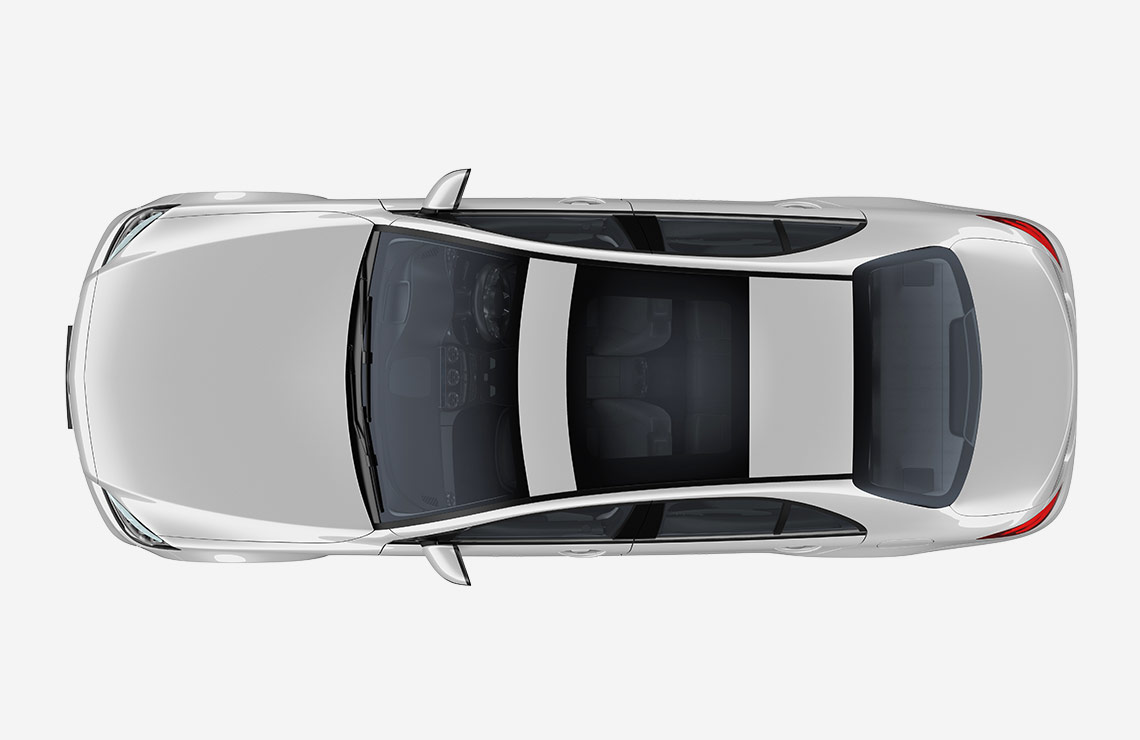
A historic disruption in mobility - and the Nordics are leading the way
The car is perhaps the category within Schibsted Marketplaces that is changing the most, and it’s happening fast. The Schibsted moblity team takes us through the major trends behind the change.
After talking about the electrification of the global car fleet for more than a decade, we are finally seeing it happen. And the Nordic markets are leading the way. In Norway alone, 65% of all new cars sold in 2021 were electric (compared to 17% in Europe) and the other Nordic countries are rapidly catching up.
New consumer needs and behaviours have prompted car manufacturers to digitalise their user journeys, thus side-lining the professional car dealers to a greater extent with an “agency model”. In the future, the purchase process will be digital, taking place online and offering frictionless services and subscriptions to consumers. The Nordics are among the top five countries in Europe in terms of willingness to buy cars online.
This shift is causing several ripple effects, including these five impactful, underlying trends:
1. Car dealerships consolidate
Future consumers expect and demand a digital relationship to the car industry, both in relation to car buying as well as access to mobility. For the professional car dealers, this is a golden opportunity to move online and harvest the results of a transactional buying process – including reduced costs and increased revenue per sale. To remain relevant, dealers will need to invest heavily in new technology. The industry’s landscape is changing dramatically, and the winners are the players who offer the best holistic digital buying experiences, as well as new services for alternative car ownership models.
2. Car e-commerce reaches new heights
The digital maturity and expectations from both consumers and professional customers are increasing at an accelerated rate. And cars are no exemption. The market for digital car buying is expected to grow to NOK 9 billion in 2026, as the online share of used car sales increases. While both internal combustion engine cars and electric vehicles (EV) transactions will migrate online going forward, EVs are especially well positioned for digital car buying, as these models are not tied to the same legacy business models.
3. Consumers strive to eliminate pain-points
Car sales have begun to shift from consumer-to-consumer to consumer-to-dealer (or C2B in business lingo) at an increasing rate, as a growing number of consumers are willing to pay for convenience and want to eliminate the pain points of selling directly to another consumer. According to Schibsted Nordic Marketplaces projections, around 15% of the overall car flow from consumer-to-consumer sales is expected to convert to C2B sales by 2026.
4. The rise of new ownership models
Today we see the rise of new ownership models. The growing sustainability considerations among consumers, coupled with the global production halt of new cars, has pushed even more people to consider “access” versus “ownership” when it comes to their mobility needs. The leasing market is expected to grow in the coming years and key players are quickly moving to consolidate. And the same goes for car subscriptions. Already today, between 18% and 30% of Nordic car customers have considered, to some extent, accessing a car through a subscription model.
5. Content is king (or queen)
Cars are extraordinarily complex consumer goods and when viewed in combination with the electrification boom, that complexity is multiplied. Range anxiety, charging speed, home and away charging are a few of the new concepts to which consumers are adapting, and as a result, the use of online information during the purchase process is increasing.
Today, over 90% of Nordic car buyers go online in connection with a car purchase, according to Schibsted’s 2022 Nordic Car Buyer Study. A huge trend, or perhaps better phrased as an opportunity, that spans all the mentioned trends above, is the doubling down on mobility content – content that guides, engages and inspires as we all navigate this historic market disruption.
Read more
A bold change to meet our users needs
Read more
A separate hub will dare to challenge
A separate hub will dare to challenge

A separate hub will dare to challenge
As Schibsted Nordic Marketplaces transitions towards the next generation marketplaces, a separate unit will find, nail and scale tomorrow’s winning marketplace models that create a more sustainable future. The Accelerator will make sure that Schibsted has the ability to innovate fast and challenge itself.
Schibsted has developed world leading marketplaces and is the largest online classifieds group in the Nordics. Now, as we are facing our largest transition in 20 years: going from a horizontal operating model, with strong brands embracing many categories, towards a new, vertical, specialized operating model, it’s time to make change possible.
Evolving user needs
This transition is fuelled by evolving user needs, leading to disruption which creates great opportunities. New business models and new user segments will emerge, enabled by new technologies that will deliver frictionless experiences.
This urges us to find, nail and accelerate initiatives to build relevant new positions that deliver upon these users’ needs. We need to act, both on short term opportunities by sustaining innovation in current verticals, as well as on the longer term with potentially disruptive innovation. Successful companies invariably face the “innovator’s dilemma”: navigating between catering to customers’ current needs, while adopting new innovations and technologies to fulfill their future needs.
The Schibsted Accelerator is our response to this dilemma. Its sole purpose is to find, nail and scale tomorrow’s winning business models which help create a more sustainable future. It will separate and accelerate key initiatives to build a relevant, systematic pipeline of promising ideas and proven cases that are in need of scaling competences to increase speed.
There are great examples of more specialized, niche marketplaces around the globe. They address the needs of a smaller user segment, typically by increasing convenience. Target users are often “non-consumers” today, either because they lack the financial means or skills to buy the traditional product. Gross margin per unit, certainly at start, will be significantly lower compared to a traditional model.
Small things can get big
Established incumbents, like Schibsted, have difficulties as to why they would tap into this. After all, they deliver good value to current users, the new segment is rather small and margins in the new model are not even close to current operating models.
However, as history has shown, small things can get big. Netflix started as a DVD-by-mail rental service. Blockbuster, at the time the video distribution market leader, could have responded to the new competition, but why would they? Netflix was only serving a small user segment that Blockbuster didn’t serve anyway, and there was no big money in this niche. The hesitance to respond is logical as Blockbuster had a different profit formula compared to the newcomers.
Airbnb and Uber are similar examples, closer to our own focus areas. Needless to say, Airbnb exceeded USD 2 billion revenue and 700 million EBITDA in Q2 2022.
Enable scale
The Schibsted Accelerator will make sure we deliver upon the next growth curve and enable proven cases to scale fast. Experimenting with new ideas, building up a pipeline and fast scaling of proven cases requires a different way of allocating resources than we do in our core business. It also requires a different governance structure, with other processes and an independent profit formula. The unit will make sure to support the verticals in the best way possible and deliver upon our common ambition.
Research shows that setting up an accelerator increases our chances of success; the survival rate of companies nurtured in a business incubator is 87% versus 44% for unassisted enterprises, so odds are in our favour.
Five cases with great potential
We will start by adapting five cases that are already part of our marketplaces’ brands today. They all have a potential to grow big and will benefit from being part of the accelerating hub.
Qasa (a modern way to rent and let out houses), Plick (preloved fashion), Nettbil and Autovex (C2B car auction), Honk (car subscription platform) and Nybrukt (refurbished electronics platform) will get the attention and help with all kind of different competences available in the Accelerator like marketing, finance, UX, tech, GTM, insights and strategy. On top of that, the governance model is set up for fast decision making whilst benefiting from being part of Schibsted.
Besides those cases a dedicated team is on a continuous hunt for building up a pipeline of new exciting ideas. Recently a discovery project within AI enabled reverse recruitment started and next experiments are planned on an AI travel recommendation tool.
Fortunately, we are not starting from scratch with finding, nailing and scaling new business models, rather the opposite.
Best practices & learnings from previous learnings are taken into account and we anchored the strategy for Accelerator. Our own learnings together with learnings from other accelerators are guiding principles, let me share a couple of those principles.
Win-win opportunities
Partnerships are key; Entering into new business areas requires different competences and people. Partnership, especially with start-ups with experience in the specific area, will create win-win opportunities.
Try-and-learn culture; A success ratio of 10 to 20% is not strange for start-ups. Therefore it is important to learn from failure, share and embed best practices and stop initiatives in time when KPI’s are not met, without blaming the people working on it and actively inform stakeholders on chances of success.
Current assets to experiment, new assets to scale; With great brands and technology and a fantastic user base, we can very quickly experiment with hypotheses by creating first versions of ideas and learn fast whether they have potential. However, when the MVP is proven, the MVP should most often be thrown out and built up separately to facilitate for scale. This increases speed, and decreases dependencies on core technology and brands.
Strong co-operation with the core
Success requires efforts from the whole organisation; With a small highly-autonomous, cross-functional team (which is the way to go for creating MVP’s) you can achieve a lot. Nevertheless, without strong cooperation with the core, success rates will rapidly drop. Alignment of ambition and strategy, the ability to get help from experts, access to users and customers and using the brands are our competitive advantage compared to others.
Start small but enable scaling; Ideas are often great on paper and can engage users and customers when asked for interest in a survey. Securing the first paying customers is a different story. Getting an MVP out in the market as soon as possible provides a quick indication of the size of the opportunity.
These are only part of the principles that we embedded within our strategy going forward. The most important differentiator to succeed, however, will be the people. Building upon Schibsted’s tradition of great entrepreneurial mindset, we will be a fearless force for change.
Read more
A bold change to meet our users needs
Read more
A historic disruption in mobility

Rob van Sundert
Schibsted Accelerator
Years in Schibsted: 4
8 rules for successful innovation

8 rules for successful innovation
A separate hub is one important thing. But there are more aspects to consider for large companies with the ambition to be innovative. Sven Størmer Thaulow shares a set of rules.
Innovation has been one of the most used buzz words for decades. In any group of people discussing the topic there will always be different opinions on the definition. In Schibsted, we have established a common vocabulary around innovation based on the curriculum of Harvard and Professor Clayton Christensen. Christensen defines sustaining innovation and disruptive innovation in the following way: Sustaining innovation occurs when a company creates better-performing products to sell for higher profits to its best customers. Typically, sustaining innovation is a strategy used by companies already successful in their industries.
Disruptive innovation is the second type of innovation and the force behind disruption. It occurs when a company with fewer resources moves upmarket and challenges an incumbent business.
A fight against the cash flow
In a large company, establishing new sustaining innovation (i.e. a new product towards the same customers) is not easy. It’s even more difficult to execute well on disruptive innovation. And God forbid – if you are disruptive against your own core business – then you are in for a real treat.
At the root of this problem is the nature of all innovation compared to the nature of a cash flow generating core business with healthy margins. Innovation means tons of experiments – of which 90% fail. Innovation often equals a long “hammock” of negative financials before hopefully some of the experiments start generating significant financial returns. Innovation = risk appetite + stamina/endurance + entrepreneurial mindset. In many large companies these are scarce resources.
The ability to succeed with innovation in such an environment is dependent on advanced corporate organisational engineering and hard, cool headed top management. And based on my own experiences in both operating and acting as the custodian of innovation units in large companies, I have concluded on a set of rules that can give some guidance on how to make it work. These rules are of course not an exhaustive list and many have done the same. In Schibsted, we try to learn and continually improve our efforts to stay a highly innovative company.
1. Set expectations right and avoid overly complex projects
Large companies are used to large projects and programmes. When innovating, that is not the way to do it. Fire off many small experiments with clear hypotheses about what problem you are solving and for whom. And towards your corporate stakeholders – be crystal clear that nine out of ten experiments will fail. At least!
2. Get the right people with the right attitude
Recruit externally primarily and hire only the right people. It’s better to grow slow and well versus fast and mediocre. Be careful with too many staff coming from the core business. Why? They bring with them the corporate way of working and rarely have the risk appetite you need. On the other hand, to not lose touch with the mothership, you do need a few from the core business in the team.
Attitude is also important. When you disrupt your core business, many colleagues in the core will react negatively to what you set out to achieve due to collision of objectives. If this is not the case, then you’re not stepping hard enough on the gas. To succeed with disrupting the core business within the same company, you will have to ask for forgiveness, not permission, and not get bogged down in the corporate way of operating. If you do, you will move too slowly.
Only use the corporate services if you need them. You should have laser focus on creating products with a market fit, not on following processes designed for a huge company.
3. Mimic the start-up setup as much as possible
From the owner’s perspective, I call this the viking ship principle. It’s when you tell the team: “Here’s your ship. It’s stacked with food, a sail, some pocket change, swords and ores. Now you guys go sailing, and we hope you make it to Scotland.”
In other words, as an owner of an innovation project, try to minimise their dependencies on others, remove as much barbed wire as possible for them, set them up with the amount of resources they need, and give them the authority to manoeuvre. And this means, there’s no one to blame! In practice, it also means establishing these radical experiments, sooner rather than later, as separate legal entities.
Why is this so important? Well, in a corporation, the teams have “gazillions” of dependencies. It slows development down. It also pulverises authority versus responsibility. There is always someone to blame. That’s a recipe for disaster for an innovation project.
4. You need a special culture to be able to operate as an antibody inside a monster
When you want to run many experiments, you will most likely do it in an accelerator-like setup. The accelerator can quickly be perceived by the staff in the core business as the privileged few, the ones who get to do the fun stuff and the ones spending the cash but not earning anything. And if some experiments are about disrupting and hence cannibalising the core – it gets even more toxic.
This can become a vicious circle for both the core and the accelerators. It’s not fun to work in a place where you feel that you are not wanted or are even worked against. The management needs to constantly manage this balancing act. One way to do this is to build a resilient accelerator culture with its own rhythm, rituals and ways of operating. But also, a culture that doesn’t become so strong that the monster’s immune system fires off on all cylinders.
5. Use governance and organisational engineering
As previously stated, radical innovation = stamina. The problem at hand is “when the manger is empty the horses fight”. Core business is under a constant margin pressure and when times are tough it’s natural to hunt for costs that can be cut in areas that don’t impact revenue too much. Hence – removing long term experimentation capacity is an easy target.
Radical innovation activities as accelerators must be organised as companies on the side of the core business areas. They should also be as high up in the organisation as possible to avoid being a victim of core business margin demands and priorities.
6. Utilise your core business for scaling products
It’s often tempting to use the core business for scaling new products and services. The classic scenario is to cross sell or bundle a new product to the existing customer base of the core business. It might be smart but very often it’s done way too early. Make sure the product market fit is well-proven as a separate service before you start “plugging” it into the core machine. Nothing is worse than selling something too early to too many customers. You only have one shot and if you fail, churn is brutal.
What’s even more difficult is to use the core business to scale a disruptive and cannibalising service, but it is possible. Schibsted did it with FINN on classifieds back in the early days of the internet. If that’s your preferred way of boosting innovation, you must deploy a combination of heavy communication about why this is important towards the core business brute force, top down-style governance, along with heavy, asymmetric incentives for the core business.
7. Make sure to use the right KPIs at the right time
It’s obvious for people who have worked in a start-up that you use different metrics at an early stage of the company compared to at a later stage. For example, pirate metrics (AARRR) are well known when you work in the venture capital space. But in a core business of a corporation, there are often other metrics, like market share, gross adds, EBITDA, revenue growth, capex to sales, etc., that are dominant. Applying these types of metrics to early-stage radical experimentation is obviously highly dangerous.
8. Seriously consider employee ownership
When you establish innovation activities as separate legal entities, you should seriously consider setting aside 10% to 15% of shares for employees. Being a part of such endeavours is much higher risk than being an employee of a large company. It also takes extreme efforts to succeed with start-ups. Hence, it should be rewarded accordingly. It’s good for both employees and the owners that the employees have a significant stake in the upside.
Sven Størmer Thaulow
EVP Chief Data & Technology Officer
Years in Schibsted: 3
A world divided

A world divided
In many ways, journalism is at a peak: media reaches more digital readers, viewers, and listeners than ever before, and digital revenues have reached record levels. Still, Ola Stenberg, Product Director at VG, is concerned. The problem: the digital-native generations expect completely different things from media.
Why are the new needs from younger generations a problem? Because what we, as a media company, did in the last decades will not work in the years to come. Our success with creating habits for our users will not continue without us rethinking pretty much everything.
Our average user, male 50, was born in the 70s. Those users remember the walk from home to the local store to pick up the newspaper from the stand in the morning. They remember linear television, the rise of cable TV and that we actually rented a video cassette player for 24 hours at the rental store. They remember when Steve Jobs told the world not only about a smart phone where the keyboard was replaced with a touch screen, but that it was a phone with a music player! And a breakthrough internet communications device! We were all amazed.
Today, it is a story that young people do not even understand. A music player?
Unknown history
What’s good enough for him (50) is not even close to good enough for her (20). For him everything just became better when the internet, desktop and smartphones evolved. To her, born and raised in a digital world, almost everything he considers radical innovation is unknown history.
“Why are you saying flat screen, dad?” or “why are you talking about buying a new smart TV?”. Have you ever gotten that question from your kids? I get them. They think my language is strange. I understand why. For me that very flat TV is still amazing because I remember the big ones. But my kids have never seen anything else, and they are not particularly impressed by the smartness of remote controls or a screen you can’t even touch or talk to.
I also struggle to get my son to pick up the phone when I call. Why not send a text or voice message on snap? Or you could ask a 20-year-old today how many numbers they have saved in their contact list.
These are our new users.
They are Gen Z, gen Alpha or the TikTok-generation. Just consider TikTok and their position for a second: 1.2 billion active monthly users spend an average of 52 minutes per day in the app. They are crushing other social media platforms on engagement rate, and I don’t even want to think about TikTok engagement metrics vs traditional media.
Will we continue to grow?
While this is enfolding, direct traffic on VG is still great. We still hold the position as the number one news source in Norway. We’ve pretty much been growing on all metrics since we went online in 1995. The big question: will this continue?
We were successful in shifting our users’ habits from physical newspapers to news sites, but what lies ahead of us might be an entirely different story. User habits are changing dramatically and faster than ever before. We will have to go the extra mile to keep up this time.
I believe we are in our biggest shift so far. A shift in users. And mindset.
The prospect of facing a total rethink keeps me up at night. Will we be fine with adjusting and iterating over time? I don’t have the answer yet, other than the fact that we invest heavily in understanding our new users.
First, we need to understand the fact that the world ahead is divided.
They live their lives online
When we (old people) talk about entering a web site or the internet, our new users live their lives online. It’s a natural part of their life, their habits. It’s basically a cornerstone in their social life, in the way they celebrate birthdays, shop, learn, experience, entertain or being entertained – how they connect with the world.
And the ones shaping their habits are not news sites like VG or others. That is done by gaming platforms, chats everywhere and social platforms like TikTok. A video and visually driven experience where short, snappy content – served to you by addictive algorithms – all connected by who you follow and what your friends like and share. That is not what the media serves today. You can argue that journalism is something different. Our ethical standards are different, and we can’t be fully personalised.
At the same time, we know through years of user research that what our competitors and especially social media platforms manage to do well – we fail at. We also know by research that the young users will find us when the news story is big enough. But what about all the other days? Again, we struggle with daily habits and loyalty. So we need to step up our game.
Understanding a new social life
To turn headaches into success we must understand our new users and their digital lives. TikTok is one thing but I hear parents talk about hours of gaming or too much screen time being a problem. It might be for some but we also need to understand that gaming, watching TikTok for an hour or chatting with friends is more than playing a game or wasting time on a screen. It’s a totally normal social life for young people.
My point is this: the new era is about users with a different mindset and ways of living their lives – which all feel unnatural for a 40-year-old like me. I still don’t talk to my phone, while my kids try to talk to every device there is. They give me that strange look if I ask stupid questions of why they want to spend 100 dollars on a pair of virtual sneakers. Yes, Nike recently bought a company making virtual shoes and it’s already a multi-million-dollar industry.
We need to hire them
We need to listen to this generation. They will probably not win an A/B test on our site today but they will for sure be the ones to serve in the future. And our big challenge is to serve them. Otherwise, we should expect to slowly drive ourselves out of business.
One way to understand the job to be done, is to continue our investment in user research and listening to the users we have, and those we don’t have. But I believe there is one more thing we have to do: Hire them.
If you do that, you get the mindset in-house. We need to get the people who can dream it, and then build it, too. Young people today are more skilled than ever. They grew up with the internet and a never-ending opportunity of learning by themselves – online.
And then, hiring is one thing – to lead is another. Some years back I could go into most rooms and bring value to the table. Now, I try to lead with this in mind: everyone in the team is there because they are better than me. And you must let the quieter voices come through. The youngest journalist or the apprentice have mindsets and skills that are crucial for your future success. But because they are fresh hires, they may not know it. So, tell them, every day and keep the door open to the management and board room and let them speak their minds.
She (20) is our key to the future.

Ola Stenberg
Product Director, VG
Years in Schibsted: 18
Schibsted projects that bridge the gap
Although there is a generation gap in news consumption there are many initiatives to reach young people at Schibsted’s newspapers today. Here are a few successful examples – and don’t miss the story about IN/LAB on the next page.

Nathalie Mark is Future Editor at Aftonbladet. She works with the editorial teams on how to attract young audiences with news stories, helps developing formats for social media platforms and she is always on the lookout for future news media- and tech trends. Today Aftonbladet has a thriving TikTok account with over 100,000 subscribers and four different Snap Shows with several 100,000 unique viewers each week – starting from zero when Nathalie started in January 2022.

VG has a team called Z, that is the frontrunner for “young content” – they also handle the social media production, distribution and strategies. In 2016 VG partnered with Snapchat and started to build channels for news and entertainment on their Discover-feed. This has become a huge success with 900,000 users subscribing for VG content. The content produced for Snapchat, TikTok and Instagram are also used on VG.no and experiences from the social platforms are shared with the newsroom

To explain news to kids, both Aftenposten and Svenska Dagbladet have newspapers for children – Aftenposten Junior and SvD Junior. Aftenposten also has a school project where teachers can use the digital content in the classrooms. This content was also the starting point to make news from Aftenposten accessible to all – through a synthetic voice.
IN/LAB is using experiments to reach news outsiders
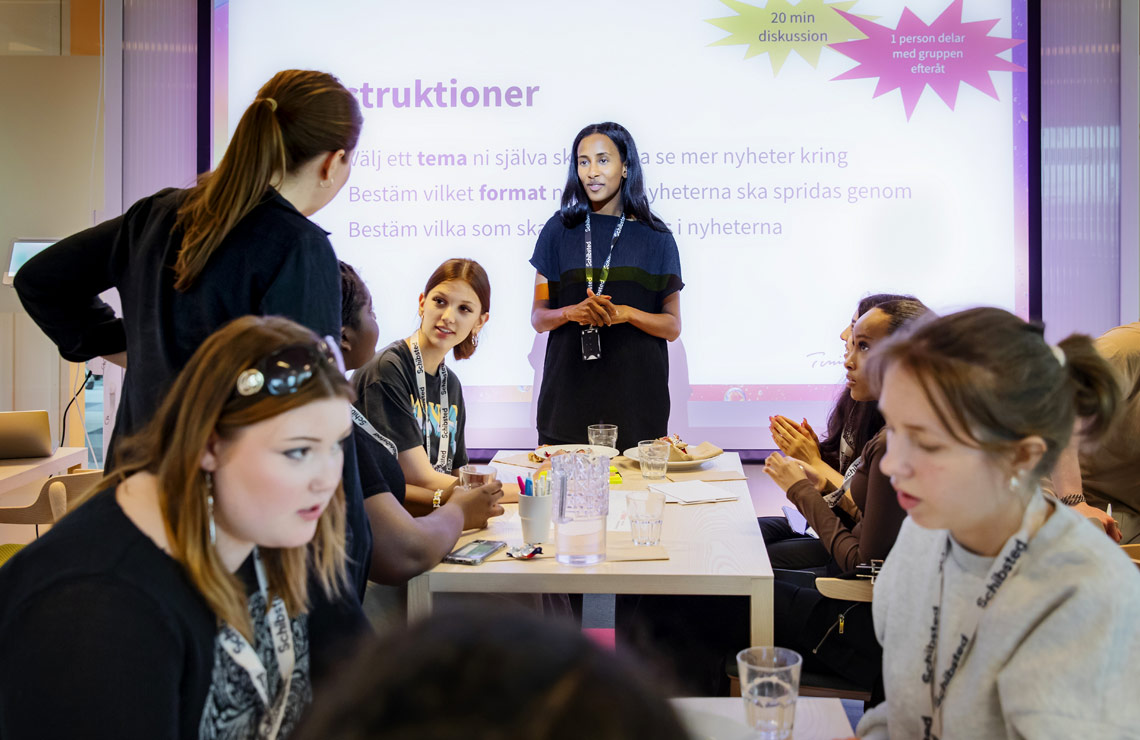
IN/LAB, a new initiative within Tinius Trust, running a workshop about future news experiences with summer workers from the local media house Fanzingo.
IN/LAB is using experiments to reach news outsiders
For a long time, the Scandinavian countries have been ahead of the game when it comes to freedom of speech and of the press. But today, large groups in society don’t consume fact-based journalism. To reach these “news outsiders” Schibsted and Tinius Trust established IN/LAB.
According to the 2022 edition of the Digital News Report (DNR) by the Reuters Institute for the Study of Journalism, 38% of global media consumers avoid the news (up from 29% in 2019). In Sweden and Norway, these numbers are 32% and 28%, respectively.
Independent news journalism plays a crucial role in serving people with fact-based information about the world around them. But if that journalism isn’t getting through to diverse groups in society, we have a big problem.
Future opportunities
To help Schibsted reach groups in society where the current consumption of independent news journalism is low, Schibsted and the Tinius Trust (Schibsted’s majority owner) established a joint venture in 2022: IN/LAB.
IN/LAB is here to prototype possible new(s) futures. To do that, we believe that we must dare to engage with truly divergent perspectives – not to legitimise, but to understand.
We use design thinking to turn insights about perceived pain points into future opportunities. In this, we are optimistic about emerging technologies and the opportunities they present for journalism. However, using it is not an end in itself. Our goal is to establish a trustful and constructive dialogue with groups we do not reach today and genuinely listen to their perspectives.
We work with specific target groups of news outsiders for various experiments. These groups vary in scope and size, based on factors such as age and gender, level of education and socio-economic status typically going into our scoping process.
Young people in the outskirts
Our first target group has been young people living in the multicultural outer city areas of Stockholm. These are areas characterised by, among other things, lower-than-average socio-economic status and residents with lower degrees of trust in society’s institutions compared to the national average.
Trust in Swedish media has been reported as increasing in the areas – but not among younger residents, who make up approximately 90,000 (under the age of 25) of the more than 250,000 people living there. We believe that this often expressed discontent and distrust in the media can have major negative consequences for the democratic and societal participation among this large group of young people.
We decided to work with 15- to 25-year-olds in the outer city areas who express a critical attitude towards news media. What are their perspectives on news journalism? What would we need to do differently to attract them as future consumers?
We have conducted in-depth interviews at local cafés, playgrounds and park benches and run creative workshops – always encouraging participants engage and express themselves in ways that are comfortable and relevant for them.
Three pain points
Through our research, we have identified three pain points in our target group’s current perspectives on news journalism:
They think that the news media shares unfair and inaccurate depictions of their residential areas and topics of importance to them.
They argue that there are too few perspectives, and too much opinion, in current news journalism. They want to make up their own minds based on facts – and not be fed other people’s opinions.
They have an instrumental approach to news but find the tools to be broken. If they can’t trust nor use what’s in the news, why consume it?
While in some ways a niche target group, we believe their expressed attitudes are critical to consider also from a broader Gen Z-perspective.
The bigger picture
Fundamentally, IN/LAB is concerned with the role that independent journalism plays in a liberal democracy. Because, as phrased by Hannah Arendt: “what makes it possible for a totalitarian or any other dictatorship to rule is that people are not informed”.
We want to turn insights about the realities of current news outsiders into future opportunities for Schibsted, our brands, and our users. To do that, we believe that empathy is our most important skill.

Belenn Rebecka Bekele
Community Researcher, IN/LAB
Years in Schibsted: 0.5

Agnes Stenbom
Head of IN/LAB
Years in Schibsted: 4.5
A curious mindset makes us thrive in dark times

A curious mindset makes us thrive in dark times
Schibsted has a history of thriving during periods of disruption and when times are tough. Andrew Kvålseth, Chief Investment Officer, believes that the secret behind this success is an entrepreneurial culture that takes calculated bets and is willing to disrupt itself.
In California there are forests with tens of thousands of mighty redwood trees that have stood there for hundreds – and sometimes thousands – of years.
Slightly less common, but even mightier, are the sequoia trees. Some of them have been standing proud for more than 3,000 years in the Sierra mountains. The world’s most famous tech VC firm, Sequoia Capital, had a pretty good reason for picking their name from the famous tree. Sequoia has been an early investor in companies including Yahoo!, Google, YouTube, LinkedIn and WhatsApp, and an investment from them is considered an honour that often triggers a cascade of other investors wanting to join the investor ranks.
So, how do you live for thousands of years?
Well, the trick is almost awkwardly obvious. You don’t die. If you never die, you live forever.
Foundation for transformation
And the redwoods and the sequoias have a trick up their sleeve: A tannin in their bark that is flame retardant. That is, some weird scientific potion that helps them survive the forest fires that typically plague any large forest every 20–50 years or so. Besides this amazing chemical compound, their bark can be up to 12 centimetres thick. They’re like the tanks of the forest, almost impossible to kill.
So let’s bring this wooden metaphor home to Schibsted and the tech scene in the Nordics. Schibsted is a company with a number of valuable assets (including Aftenposten in Norway and Aftonbladet in Sweden) that were born in the 1800s, after the printing press but before the car was invented, and roughly 100 years before the humble transistors paved the way for the digital revolution. These companies survived the great depression in the 1930s and dozens of recessions in their 100+ year lives.
In late 1990s and early 2000s, these companies formed the foundation of a massive digital transformation taking place inside of Schibsted: The creation of our early, online marketplace business and a culture around innovation where we started partnering with some of the best entrepreneurs in the Nordics, both inside and outside of our company.
And it all could have ended there. The dotcom crash, our own version of a forest fire in 2002–2003, was so severe that some pundits back then actually thought that the Internet itself would contract and potentially disappear. But at the same time, consumers kept on moving online, kept on adapting to digital news consumption patterns, and they bought and sold their stuff online at a pace that led to continuous, massive changes in consumer behaviour.
Seeing permanent changes
Schibsted understood this. The mega trends and changes in consumer sentiment are for real and permanent. Revenues will come back. So will profits.
So, we doubled down on our marketplace business and in the next year, we began replicating our marketplace platforms globally.
The Lehman crash of 2008 was another massive forest fire in our industry. Ad revenues plummeted and many of the tech VCs that survived the dotcom crash were wiped out.
What did Schibsted do?
We invested in and built some of the most attractively valued and best-run tech assets in the Nordics and beyond, including Lendo, Kundkraft (sold to Tibber) and Leboncoin, to name a few. These and other organic and inorganic investments made during that time have created enormous value.
And now we’re here again. There are dark clouds over the global economy and perhaps even darker for us in Europe as we face compounded humanitarian crises with unstable energy markets and rising inflation.
But Schibsted sees opportunity during these times. And I think we might have found our secret formula for survival: A curious mindset that explores opportunities when few others see any. An entrepreneurial culture where we choose to take carefully calculated bets on those opportunities. And a culture of coming together to save money in different parts of our business to fund the new opportunities we see.
Based on our learnings, these are our five key strategies, when investing during hard times:
1. Think long-term – for real!
Booms and busts come and go but mega trends in consumer behaviour sometimes stretch across decades. Invest in long-term ideas and in people who never lose sight of their vision. Most companies you see turning into unicorns today were actually conceived 10-15 years ago and lived a quiet life outside the hype (as was the case for all our marketplace businesses at one point in time).
2. Stick to what you know and focus where you can add more value than others
Schibsted has tons of experience embedded in our various teams in the Nordics. We also have strong brands which reach the majority of the Nordic population daily. This is the time to use those assets and experiences and invest in ideas where we can help accelerate them beyond what other owners can.
3. Revenues are vanity, profits are sanity
A start-up or new organic business doesn’t necessarily need to be profitable in the near term. But your unit economics need to be! That is, selling a customer a product for 1 USD that costs you 2 USD to acquire is not a sound business model (it’s scary how often founders miss this).
4. Love your founders and leaders who can adapt to changing conditions
If the world changes, your plans need to change with it (although the vision can remain). Smart founders and leaders are the ones who are ready to pivot and change both strategies and short-term plans when customer sentiment rapidly changes or when the funding environment or technology evolves.
5. Understand that companies are built, not born
If you’ve built, or supported, an entrepreneur from company conception to success, you know that success truly is a factor of thousands of gruelling fights and mistakes. In a start-up, you chew glass and barbed wire for breakfast, but you always make sure to make one good decision for every two bad decisions. You also incorporate those tiny feedback loops from your customers into corporate strategy and culture on a weekly basis. Over months and years, those tiny, accumulated improvements could be tomorrow’s category winner.
Andrew Kvålseth
EVP, Chief Investment Officer
Years in Schibsted: 1
“These leaders know how to manipulate journalists”

Vegard Tenold Aase grew up in Norway’s second city, Bergen. He has written for Norwegian newspapers, as well as such American publications as Rolling Stone magazine and the New York Times. The Emmy-nominated journalist lives and works in New York and he’s specializing in extremism.
“These leaders know how to manipulate journalists”
Few journalists have interviewed as many extremists as Norwegian Vegard Tenold Aase, correspondent for New York-based VICE News. He urges colleagues not to take the task lightly.
“I know nothing about sports. That’s why I don’t write about sports. I don’t review operas either. Naturally, editors don’t send amateurs on those kinds of assignments. They understand that knowledge is the key to critical journalism. Yet extremism seems to be an exception. It seems they think any reporter is qualified to interview a fascist,” says Tenold Aase.
Vegard Tenold Aase faced a pistol pointed at his Adam’s apple at a Klu Klux Klan gathering. He was caught in the crossfire between neo-Nazis and anti-fascists wielding bricks. For several years, he lived close to American extremists, resulting in the book “Everything you love will burn: Inside the rebirth of white nationalism in America” in 2017.
More fascinated than appalled
“It started with me writing a thesis at Columbia University’s School of Journalism. Then I heard that there were neo-Nazis living in my neighborhood in Brooklyn. That was strange, I thought, being someone from orderly and tolerant Norway,” he says.
His first articles suggested that he was more fascinated than appalled by the extremism he was describing. That all changed on 22 July 2011, when terror attacks by a right-wing extremist left 77 people dead at home in Norway.
“I saw the need for deeper understanding, and I became more aware of the dangers of poorly founded journalism about extremism.”
Warned about inviting Bannon
When Trump’s then-adviser Steve Bannon was invited to Nordic Media Days in 2019, Tenold Aase was among those who warned against it. It may seem paradoxical that a journalist who had published interviews with countless conspiracy theorists and demagogues was critical about others giving the same kind of people a speaker’s podium.
“I’m not opposed to interviewing extremists, but we must know why we are doing it and we must understand how to do it. These leaders are calculating. They know how to appear more harmless than they are. They know what it takes to manipulate journalists,” he says.
Tenold Aase finds it disturbing to read cozy “fluff” interviews with neo-Nazis in major American newspapers. The basis seems to be that “these people could have been like you and me”.
“When I started covering extremists, they were as naive as I was. The majority weren’t used to the news media. So, it was easy for me, a bald and innocent foreigner from Bergen, Norway, to gain access. Now many extremists are professional communicators. In the United States, a new form of extremism has turned the country upside down.”
What can journalism contribute? What should we do to fight extremism?
“We need to take a step back. Here in the US, we experienced the storming of Congress, we have the QAnon movement, and a deep division in the population. But we must not assume that everyone who was there in Washington on January 6 were fascists and extremists. We need to explain where all that anger comes from.”
But is it possible for us – many people will think that we haven’t earned their trust; that liberal, privileged and urban journalists don’t understand their own era?
“That is correct here in the United States. The press hasn’t done a good enough job. I think the death of community journalism has had a big impact. People need journalists close to them who understand everyday life. We know that many white people are furious, they feel let down by the system. There are people who feel that they are deprived of opportunities. Such currents are far more journalistically interesting than interviewing individuals who have found answers in extremist ideology.”
What about the future here in the Nordics? Any advice?
“I have noticed the election results in Sweden and that certain circles are on the rise. My advice would be to understand why people are angry. There can be legitimate reasons for deep dissatisfaction. This is what journalism should highlight.”

Gard Steiro
Publisher, VG
Years in Schibsted: 22
A local news focus brought BT back from the brink

Starting in 2021, Bergens Tidende published a series of investigations on Rolls-Royce’s sale of Bergen Engines to a Russian holding company. The newspaper was awarded Norway’s most prestigious journalism award for the reports.
A local news focus brought BT back from the brink
In only six years, Bergens Tidende went from crisis to “digitally sustainable”. A clear local focus, live reporting and investigative journalism have made the readers happy.
Bergens Tidende’s business had been booming for decades. At its peak, the newspaper reached about 260,000 readers every day, with 100,000 copies in circulation. The paper, as it was said, “printed money”. But as the media crisis hit, the glory days soon vanished. By 2015, BT was facing the wall. The model wasn’t working.
Six years later, in December 2021, the tables had turned yet again. Øyulf Hjertenes, the director of Schibsted Kyst and Chairman of the Board at Bergens Tidende, declared BT to be “digitally sustainable”. He explains:
“If BT closed down the printed edition tomorrow, digital revenues from subscription and ads will uphold a strong newsroom. The paper will still be able to keep holding power to account in Bergen. Back in 2015, most people didn’t believe this would be possible,” Hjertenes says.
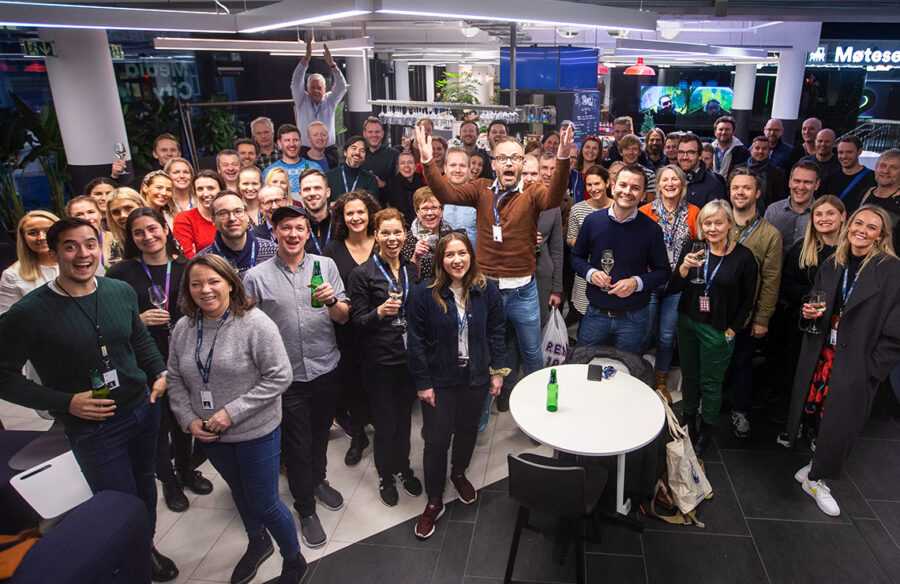
What made this comeback possible?
Back in 2015 subscriber numbers were dropping fast, and the economy was in a bad shape. Print revenues kept falling, and a digital business model mainly based on ads and pageviews were not producing sufficient results. Costs of NOK 50 million had to be cut. The printed Sunday edition was shut down and one out of five journalists had to leave. The financial forecasts were bleak and nowhere near digital sustainability.
Something had to change.
A clear and ambitious goal
The turnaround was enabled by a clear and ambitious goal: 50,000 digital subscribers in three years. In the BT newsroom, it became known as the “50k strategy”. It drastically changed BT’s way of working, priorities across the whole newsroom, consumer business and product and technology.
The strategy outlined new priorities for everyone and set up ten pillars for improvement. BT would prioritise live reporting and longform quality journalism – and do less of the “in-between”. There would be fewer stories, stronger focus on unique local reporting, while letting go of most generic national and international stories. BT wanted to bolster its position as the primary news destination in Bergen. The entire organisation was tailored towards being subscriber-centric.
Introduced new tools
In the coming years, new tools for live reporting, storytelling, data analytics, debate and reader involvement were introduced. Algorithms were implemented on the frontpage, and data and insight capabilities were introduced in the newsroom. Cross-functional work became the norm, performance numbers were posted front and centre at the offices, and staff started celebrating major shared milestones.
Live reporting became especially important. A specific improvement point identified in 2015 was to find better ways to convey brief, developing news to readers. The news feed “Trafikken direkte” (Traffic Direct) was established to meet the needs of the users for live traffic reporting.
Successful updates
Bergen is a city with a vulnerable infrastructure. One accident in the main road tunnel is enough to make half the population late for dinner. Instead of spreading a few short news items across the BT.no front page, these updates were gathered in one place, harnessing traffic data for added value. This has become BT’s best-selling digital product.
“We were quite early to use live news studios. In fact, the tool first developed here has now been adopted in several parts of Schibsted,” says Liv Okkenhaug, head of breaking news.
In addition to a manual newsfeed with information about accidents, rush traffic or cancelled trains, BT integrated several automated services, such as traffic data from authorities, web cameras and queue maps. Input from commuters is also important.
A willingness to pay
From the beginning, BT has constantly worked on developing its live studio format, setting up several such news feeds.
“Our journalists pride themselves on reporting rapidly and thoroughly on everything from major catastrophes to tunnel or road closures. Quick, precise information is the main goal.”
In Okkenhaug’s view, people are much more willing to pay for these live studios than commonly expected.
“This is about providing people something that is useful in their day-to-day lives. Finding out how long they can expect to be stuck in traffic, for instance. Whether you are a nurse on your way to work, or if you are a professional driver, our traffic studio is helpful.”
Constantly looking for next theme
According to Okkenhaug, the editorial staff is constantly looking for the next theme where readers could use a hub. In the summer of 2022, it was the transport chaos throughout Europe. In the autumn, the staggering energy prices.
For her, the point is to build a culture of innovation that puts the users’ needs first. Live reporting helped change BT’s game. By Christmas 2019, the number of digital subscribers had passed the number of print subscribers, bringing overall subscription numbers to an all-time high.
In 2020, Frøy Gudbrandsen became editor-in-chief and continued to position BT as the readers’ “guide”. She pushed for new digital formats, investigative journalism and new subscriber options.
The effort for investigative journalism paid off. One of the paper’s most acclaimed projects, are the award-winning stories about Bergen Engines. The series of almost 100 articles are described as almost a spy thriller. They focus on how oligarchs close to Vladimir Putin almost took over a Norwegian engine company of vital national security importance.
Setting a national agenda
“Our journalism resulted in big consequences. The sale of Bergen Engines was stopped, and the Norwegian government received strong criticism in Parliament,” says Eystein Røssum, BT’s head of investigative journalism.
According to him, BT is a self-aware and ambitious newsroom, and that it’s natural for them to set a national agenda.
“Investigative journalism is part of the cornerstone of the entire BT project and is integrated into all journalistic work. We put together teams according to the case we are working on. It’s something everyone is involved in, not limited to an “elite group” of privileged journalists,” says Røssum.
The bleak prospects of 2015 have been turned around to a solid economy while still providing award-winning journalism. The paper has 85,000 subscribers, a 37% increase since 2015.
A common understanding
Øyulf Hjertenes believes that a common understanding of the situation and clear strategies and priorities were crucial for the organisation’s turnaround.
“The journalists and editors in the BT newsroom have high ambitions, and they don’t look back. There is a willingness to let go of who we are, for what we might become, and with such a mentality there is basically no limit to what we can achieve,” says Hjertenes.
He believes this ambitious culture is the explanation behind why BT is punching above its weight both in investigative journalism and in product development.
In 2021, Bergens Tidende won the “Newspaper of the Year” prize in Norway. The jury was impressed by how BT over the past year had increased its efforts in innovative and investigative journalism, close to people’s everyday lives. The jury noted that BT clearly “plays with technology and challenges the way stories are told”, and that “readers get an impressive journalistic product that is both important and entertaining.”
This is Bergens Tidende
- Bergens Tidende is Norway’s fourth largest newspaper, and the country’s largest newspaper outside Oslo with 226,000 daily readers and 83,000 subscribers.
- It was founded in 1868.
- BT was published in tabloid format from 2006.
- Part of the Schibsted family of digital brands since 2009.
- The paper was awarded the European Newspaper of the Year in the regional newspaper category by the European Newspapers Congress in 2011.
- In 2021, Bergens Tidende won the ”Newspaper of the Year” prize in Norway.

Liv Skotheim
Managing Editor, Bergens Tidende
Years in Schibsted: 17
Do you know what kind of brand you’re building?

Do you know what kind of brand you’re building?
As technology enables new user habits and needs, new brand categories evolve. For brand builders, it’s crucial to get one thing right when communicating a product or service – what is it?
The new world
There was a time when competition was mainly a battle for market share in a familiar and fairly predictable arena. Brand building was a matter of establishing that this brand is better than that other brand. Today, it is not so much a matter of which brand is better, but whether we trust the brand enough to be influenced to do new things together. New tech-enabled product and service categories emerge and fade out of the picture at a rapid pace. People make use of brand relationships as they navigate these new and messy competitive arenas.
The old brain
But while the world changes rapidly, the way our brains work does not. This presents some new challenges to brand builders in our time. How can innovators best find or create subcategories in which to position and grow new brands? And how can brands navigate category shifts in line with shifts in the competitive arena, and still maintain existing brand relationships? Brand building starts with understanding the phenomenon of categorisation.
We used to think that the brain perceives something by first becoming aware of it, then evaluating it and assigning it to a category. On the contrary, according to scientists today. We categorise before we evaluate. Things that don’t belong to a known category can seem almost invisible to people, and that is not a great starting point for brand building.
Acquiring new categories takes time and is pretty hard work for the brain. To make it simple for us to see them, successful brands like Vipps, MobilePay and Klarna, focus on a single feature – peer-to-peer payments, pay with your mobile, and smooth transactions – even if all these brands have a wider portfolio of things that they offer.
Subcategories
New brands have a few options. Some innovative brands take advantage of changes in trends and behaviours by defining new subcategories that propel them from niche to mainstream. Beyond Meat, for example, does this by insisting that its plant-based product is meat. Why would they do that? As a category, “meat substitute” is niche. It is relevant and visible primarily to people who don’t eat meat. Some people are eating less meat, for a variety of reasons related to health, the environment or animal welfare, but many of us are not that conscious as consumers and eat what we are used to eating.
Simply by saying that there are different categories of meat – meat from animals and meat from plants – Beyond Meat enters the large competitive arena for all carnivores. Granted, there are other expectations as to the versatility and juiciness of a meat product than just being a meat substitute. But this is a challenge Beyond Meat seems happy to take on to play in the big league by placing its plant-based meat subcategory firmly inside the big meat category.
Anchor and twist
Another option for a new brand is to create a new category and position its brand inside it in one go. This is hard work. Oatly is an example of a successful anchor and twist manoeuvre. The brand does not say that it is milk, but by saying that it is like milk, the brand is anchored in a familiar category. The twist that separates the new category from the old is explained by saying that unlike milk from the cow, which is for the calf, oat milk is made for people.
Another type of anchor and twist is when a tangible product (such as an electric scooter) becomes a service provided through an app (such as Voi), similar to how music CDs were replaced by streaming services. We have learnt how this goes, so new categories of this kind are readily available to us (and our brains) when presented as a product-to-service scenario.
Navigating category change
But what happens when a brand’s category has become obsolete through disruption? Is the brand destined to become obsolete as well – like Kodak? Not necessarily. Some brands succeed and grow stronger by maintaining relationships through category shifts, and we allow them to introduce new business models and present us with new ways of providing value. Consider Netflix. Netflix had built a strong brand as a DVD sales and rental company and was able to maintain its relationship with its customers, as well as reach new ones, as it transitioned to streaming.
When it further expanded its brand from content distribution to content production, that was another way of strengthening that brand relationship. As long as a brand is able to cater to people’s evolving expectations, the relationship endures even if the category changes.
More of this, please
Strong brands that navigate category shifts and find or build new categories are easy to spot when we look at how technology has led to changes in how people consume and find entertainment. Other categories cry out for the same level of brand building innovation to help us see and understand the relevance and value of innovative products and services. Education, health and finance seem to be particularly ripe for clarifying subcategories, meaningful identities and business models we can understand and trust – basically, brands.
The choice of category is a strategic one and should be based on establishing which category will give a brand the best possible chance of playing a part in people’s lives, now and in the future. The opportunities for creating strong brands that can take significant positions are clearly there. But make sure you can answer this question clearly before you go any further – what is it?

Kirsti Rogne
Partner and General Manager, Mars Brand Strategy
Friend of Schibsted as a brand consultant
Five crucial tips for marketing

Five crucial tips for marketing
Chasing the latest marketing trends might not be the best way to curate growth for small companies. It will mean that you waste time and money. And even if “no size fits all”, there are a few basics to have in mind, says Mari Aldrige Øverland at Schibsted Ventures.
It’s not only fun things on Tik Tok
The first step is acknowledging that marketing is much more than just buying media and creating ads. Of course, that is a big part of it, but far from everything. Marketing is also about product (or service), price, placement (distribution) and promotion (sales today and sales tomorrow). It is not only the colouring-in department, that does some fun things on Tik Tok every once in a while.
It’s important to remember the whole bouquet of the marketing flower and not to jump the gun discussing tools x and channel y straight away! Marketing strategy is where you play and how you win. How to deliver on the chosen strategy and execute is what we call the tactics. First have clarity on who, what and when – and then you can start to think about the specific channels and tools.
Know what drives sales
It might not be important for customers that you are the cheapest, the most innovative, the smuggest challenger or even the greenest. What will yield the most growth is focusing on the key drivers that are important to many people. This might not be what you think. Understand and adapt to customers’ actual wants and needs, rather than differentiate from competitors just for the sake of it. Figure out the drivers and barriers in the category and learn what actually drives sales and how you and the players in the category score on the different drivers. In effect, this will help you find and choose a profitable position that will make you known for something customers want to buy and, most importantly, are willing to pay for.
Learn how to say no
Strategy is said to be what you don’t do. Smaller brands with smaller budgets must dare to say no, make extreme choices and prioritise. Make sure everyone is running in the same direction and that they are empowered to make decisions to get there fast.
Let’s be honest, there are loads of drawbacks as a small brand, but there are definitely some benefits to it too. The proximity to the customer, the creativity you can unravel and the short road to decisions make up some of its appeal. Your resources are so much more limited and precious than in the big companies, so use them wisely.
You be you
It’s easy when you enter a category to unconsciously be coloured (literally) by how the other players look and feel. Don’t, it’s a trap! Make, build and measure your distinct assets, such as colours, slogans, sounds, characteristics, music, graphic elements, etc. If something with your brand can be attributed to another player in the market, then it will be completely useless to spend time or energy on it. Ask yourself if this element can be attributed to your brand or to no brand at all. If so, then this is a good space to continue to build or start building a new asset.
Make sure it is easy for existing and potential customers to find, think and buy your brand once they enter the category. Stand out and make sure you are not driving sales for your competitors. This will make your marketing efforts more cost-effective, which is key when budgets are limited.
Both long and short
We’ve all heard the 60/40-rule indicating that one should use 60% on long-term brand building and 40% on short-term sales activation. This is impossible to copy paste for most start-ups, as it will take years to get back. There’s good research backing the idea that the equation should be almost reversed for smaller brands: 35% on long-term and 65 % on short-term.
This might not be right for everyone, so rather ask yourself “how much can I carve out of my budget, with a good degree of certainty, to use on long-term brand building?”. Go with that and start the brand building process, and then gradually bump this up. Just make sure you are hitting enough revenue targets to stay in business along the way.
There are no quick and easy short-cuts but if you can get these things (and other basics such as market research, segmentation, targeting, objectives, product, price, tactics and distribution) right, you have helped set up your brand for success. And remember, always do the strategy before the tactics.
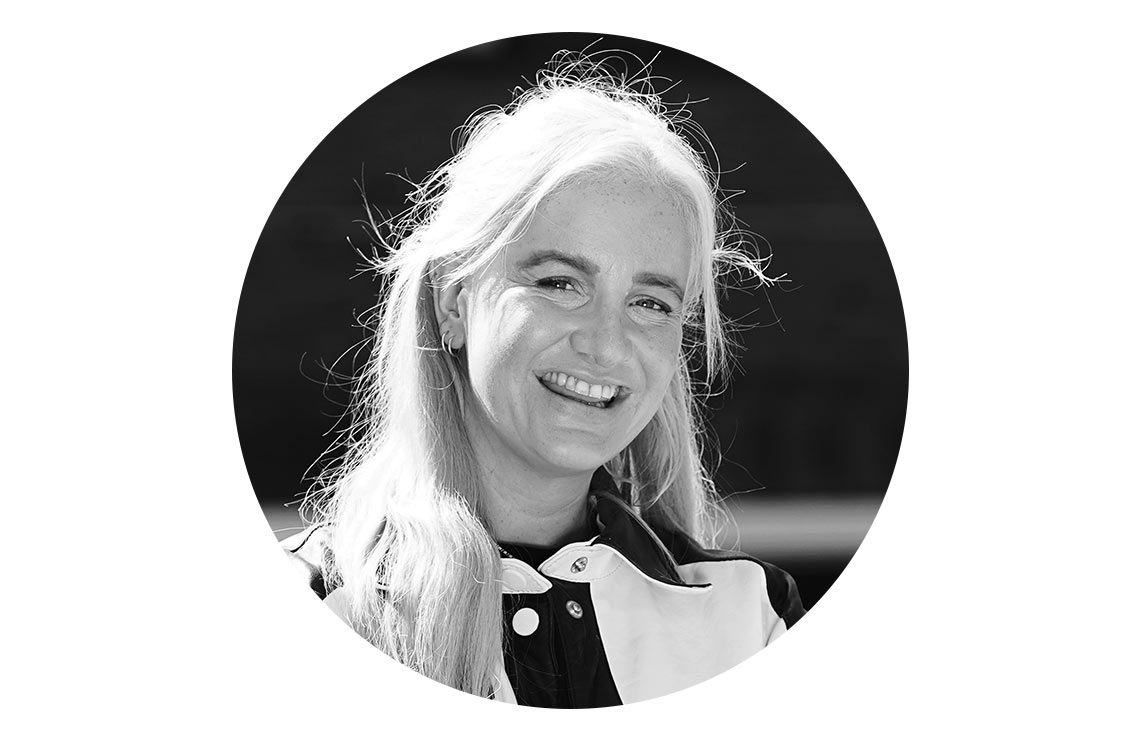
Mari A Øverland
Marketing Manager Schibsted Ventures
Years in Schibsted: 0.5
Sales and marketing trends: 2023

Sales and marketing trends
How do you handle marketing in times of crisis and how energy efficient is your business? These are some trends identified by Schibsted’s sales and marketing team in Sweden.
User traffic is shifting in new ways
New social media platforms like TikTok now have more traffic than Google. Snapchat is struggling to attract the youngest users. And at the same time, traditional news media is breaking readership records. The disruption in user traffic and readership is no longer linear from legacy to social media, but we now see it shifting in totally new ways. The media landscape has evolved (yet again) and those with the most social affluence attract the most users, readers and advertisers.
This power shift can also be seen elsewhere. For example, digitally savvy individuals are now showcasing their affluence by recommending brands they like to unforeseen audiences. For companies, this means that influence is fluid and not particularly tied to those with the deepest marketing pockets.
The value of first party data
Everyone, from tech companies to publishers, is working to capitalise on their first-party data. As big tech and regulations are clamping down on third-party tracking and cookies, many are finding that they need to harness the data they acquire from their users themselves.
Building their own first-party data systems lets companies own the entire value chain, establishing better control and increasing trust with users. So, what does it mean going forward? Well, since brands have long anticipated this change, their first-party data is richer than ever. Media outlets are naturally doing the same, and Schibsted is now, for example, offering brands to “match” or “unmatch” their first-party data with Schibsted data, to get that bespoke targeting.
This product is simply called Schibsted Match since that’s exactly what offers – to reach your own designated target group in our brand-safe context.
Be transparent about your sustainability
The sustainability issue for brands is spilling over into media, collaboration partners B2B solutions. Brands now look across the entire food chain, from subcontractors, media channels, contexts where you are seen, etcetera, to make sure that their values are mirrored by all their business partners.
Most companies realise that it’s not enough to simply communicate consumption. You also must communicate value creation and sustainability. What you produce and offer is as important as “why” and “how”. Especially in times when the solution we all hoped would be the answer to our prayers, namely the electrification of society, now turns out to be more complicated than we previously thought. It will require greater transparency across the board and throughout the entire network of collaborators.
Prepare yourself to answer the following question when approached by a new B2B client: “How energy efficient is your business when producing the products and services that you offer?”
Marketing in a crisis context
Most companies are used to having a more reactive approach to crisis communication. Now we’re seeing a shift towards an “always on” mindset where you must put your planned marketing messages in the crisis context. Communication in times of crisis calls for contingency plans for imminent issues, such as a pandemic, social divide, climate change or war between nations. Being able to communicate your value in this context is of utmost importance and will come to characterise the successful companies with loyal customers and growing audiences. R
esearch from Schibsted’s sales and marketing organisation shows that most people live as usual during times of crisis but many choose to consume less of what they don’t really need. Established news channels become more important and people turn more often to credible news sources to stay up to date.
Back to brand marketing
We live in times where targeting is a challenge, but still very much desired among advertisers. Back into the spotlight comes brand-building marketing. We see a rise in demand for formats that put the brand front and centre, leaving the users and readers with some breathing space. Long have we filled the digital space with conversion-driven advertising that people sometimes find intrusive. With the return of the brand-building messages, advertising becomes fun again, creative and content-based.
Research shows that emotional communication is the most effective way to build a brand and stay in the mind of the audience. Campaigns that succeed in creating impact do so because they have succeeded in reaching out, reaching in, as well as creating change and influence.
The end of IRL
Are the days of meeting and mingling with industry professionals over? Business events struggled to fill their seats this past year as we all try to make sense of the post-pandemic world. What about the chatty atmosphere of the office landscape? This last year has indeed shed new light on the office space in general, and we’re not as inclined to pop by anymore simply because we miss our colleagues.
The webinars and the digital meetings are here to stay. Hate them or love them – it seems that we hate commuting even more and that the love for the independence of our home offices trumps even the greatest of office atmospheres.















